






Tuesday 22 July 2014
An Evening Visit
Tuesday was another lovely warm July day with the temperature making it up to 26.6°C in the afternoon.
We left it until early evening to pop down to the plot to do a bit of watering and any harvesting that took our fancy. As it was we spent a bit of time callin’ as they would say in these parts or gossiping about the rather pathetic set of allotment rules and regulations the council have introduced this year.
We did manage to water the greenhouse and a few newly planted crops as well as harvest a few Sungold tomatoes, Loch Ness blackberries and the first crop of Cobra climbing French Beans of the season.
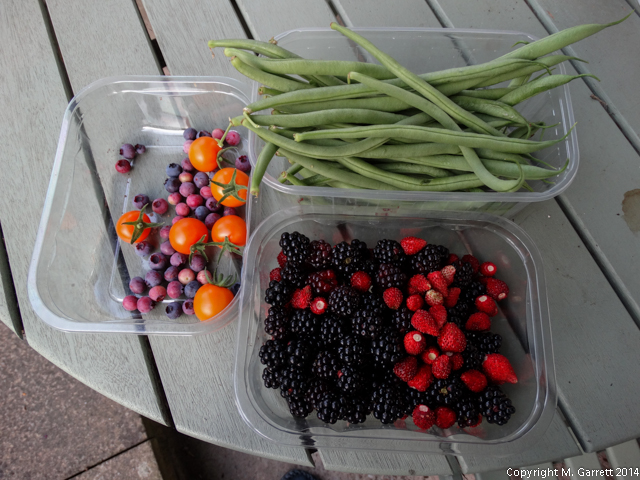
Wednesday 23 July 2014
Maximum Zoom!
Wednesday continued the spell of beautiful July weather.
On Monday we visited RSPB Dearne Valley or Old Moor. As usual the birds played hard to photograph insisting on making sure they were out of decent photographic range. Sue posted some photos on her Flickr page here. Just to be different here are a couple of pictures I managed, one not too bad but could do better and one well, shall we say at the very end of the cameras zoom range. That’s my excuse any way.
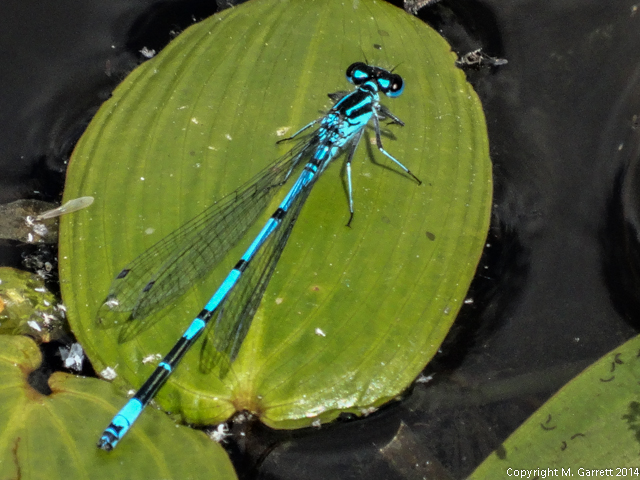
This is my not too bad one as this blue damselfly sat just long enough for me to find it in the camera viewfinder before it was off whizzing around the pond not settling again and disappearing from view.
My second picture as I said is by any standards not very good but the chatter in the hide was all about a golden plover which was hiding itself amongst a large flock of lapwings. With the camera acting as a telescope it took me a long time to pick out this individual.
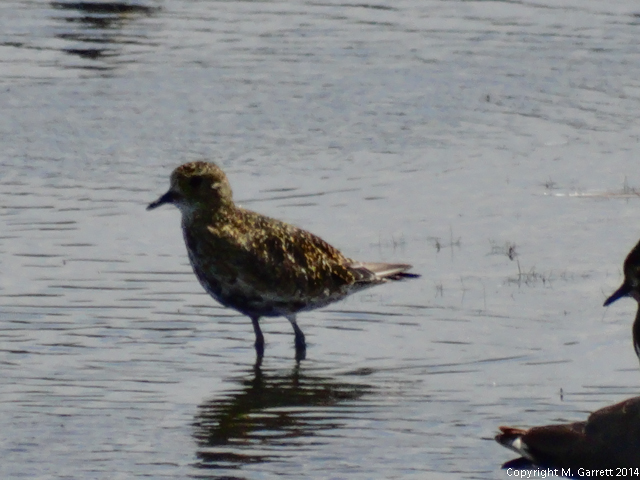
Just to give you a better idea of where this bird was below is a general shot taken from the hide.
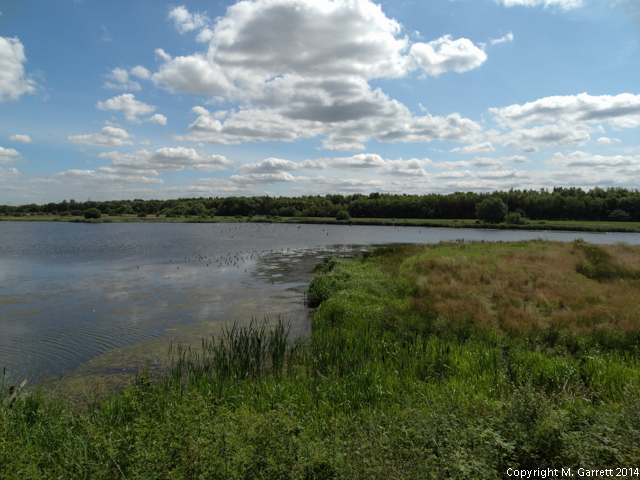
The golden plover if indeed that’s what it is is amongst the birds that can be seen wading just off the mud bank in the centre of the picture. I’ve also learnt that the tiniest speck of dust or mark on the camera lenses is also magnified to enormous proportions on maximum zoom. I’ve still to find a good method of cleaning a camera lens to absolute perfection.
This particular golden plover must have problems with its internal clock as RSPB Old Moor is, according to the RSPB, a good place to see wheeling flocks of migrant golden plovers in autumn. This ones’ arrived a couple of months early.
Thursday 24 July 2014
Little and Large
Thursday continued the spell of fine weather as it became our hottest day of the year reaching 27.9°C notching up the record by 0.5°C.
It wasn’t a good day for doing this.

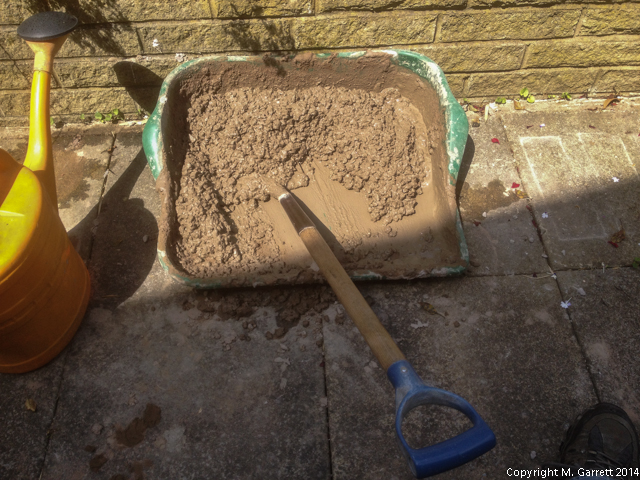
It’s worth noting that the standard size potting trays sold by all good garden centres are just about the right size for mixing a standard size 25kg bag of ready mix mortar or concrete. They’re not much use in the greenhouse afterwards though. It was hot and sweaty mixing concrete for foundations and mortar for our blockwork wall outside our summerhouse but with only a little bit of mortaring up left to do this little project is just about completed.
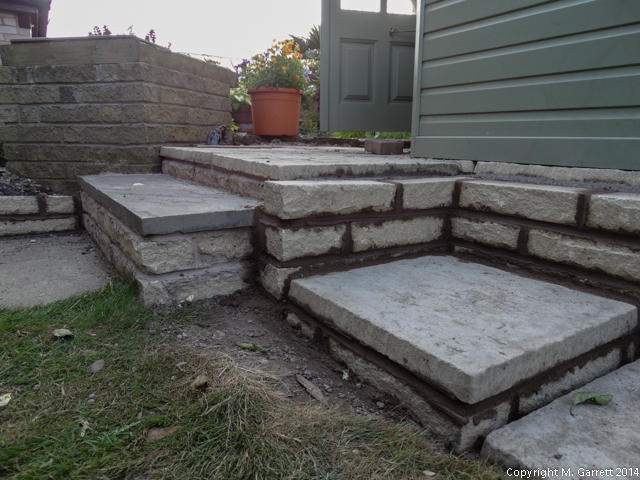
In our home greenhouse our tomatoes are continuing to grow well unlike the plot greenhouse ones planted in similar grow bags.
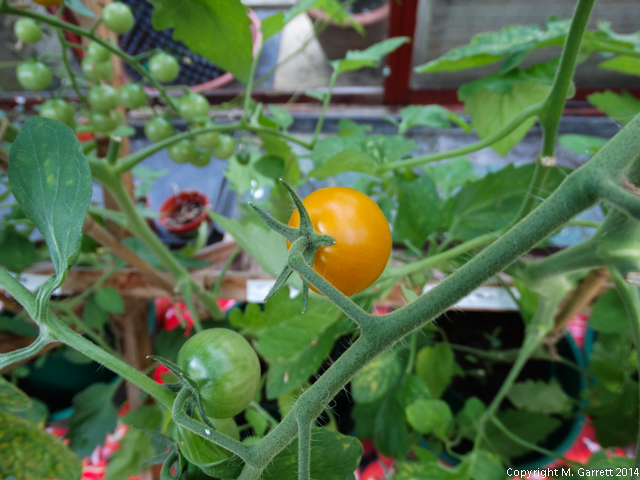
Our little Sungold tomatoes are now starting to turn. We’ve had a few from the plot greenhouse and they’re really tasty so are already added to next year’s growing list. Who else will join them?
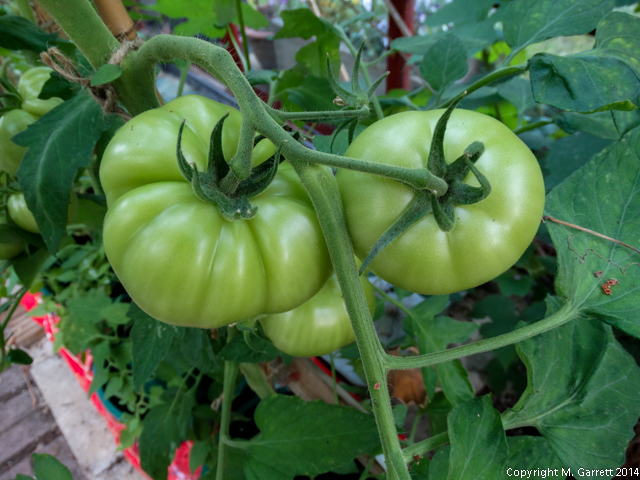
These large Big Boy Hybrids are looking good but aren’t showing any signs of turning just yet. Will they be too pass the flavour test and get added to next years list?
Friday 25 July 2014
Cucamelon Day
Another day of hot sunny weather and another record as Friday takes over from Thursday as the hottest day of the year. It was only by 0.1°C but we have reached the 28°C or 82°F mark for the first time this year.

At lunchtime the decision was made to try a taste test on our cucamelons. Critically we now had two tiny cucamelons so we could have a whole fruit each to taste. Sharing one would have been tricky.
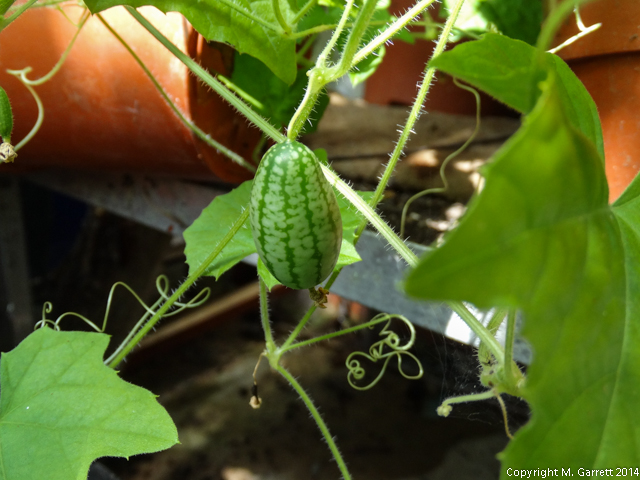
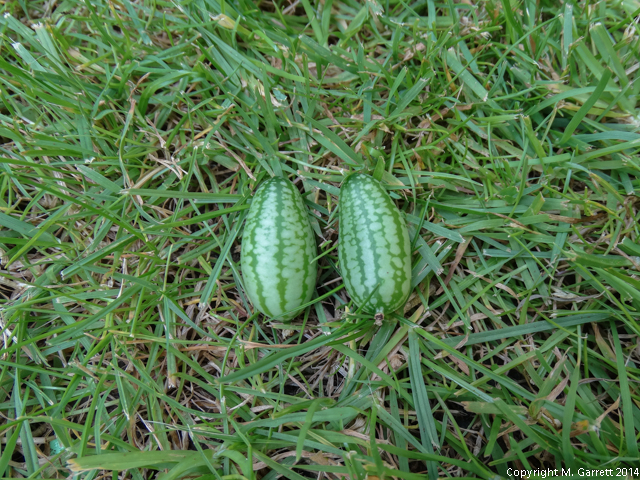
The two tiny fruits got a careful wash and were the first things to eat from our lunchtime plate, a sort of fruity amuse bouche. (I’ve stopped watching so many cooking programmes now).
Being a bloke I just popped the whole thing into my mouth and gave it a chew. Sue was far more lady like biting off a small piece as a taster. I chewed and got a faint flavour of cucumber. Sue’s verdict was that it was more or less tasteless. Certainly we both thought the fruit was a disappointment and unless there’s a great improvement in any later fruits it’s something we won’t be growing again. Sorry James it‘s not for us.
Saturday 26 July 2014
Phew! A Scorcher Produces Both a July and Yearly High
Well Saturday really has set the bar very high as the temperature reached 30.3°C in the middle of the afternoon. That’s our hottest day of the year and a record high for July but only by 0.1°C.

In spite of this spell of fine weather it now looks as though our on’off crop of Oullins gage plums is now definitely off. It’s around now that we would expect them to turn from a dark green to golden, orangy, yellow as they ripen. Instead they’re turning rotten directly from their green colour and falling off the tree.
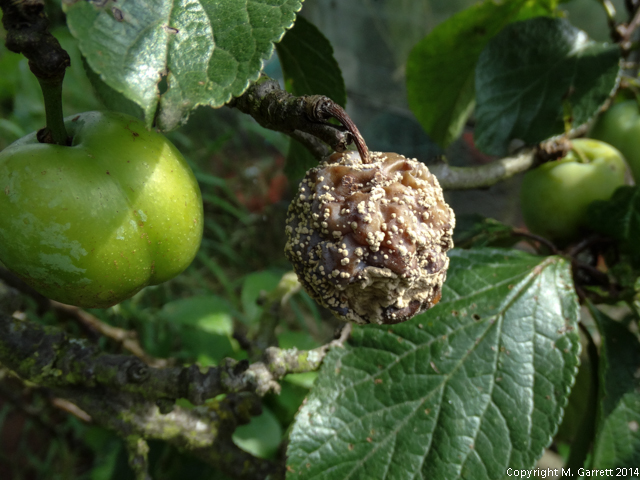
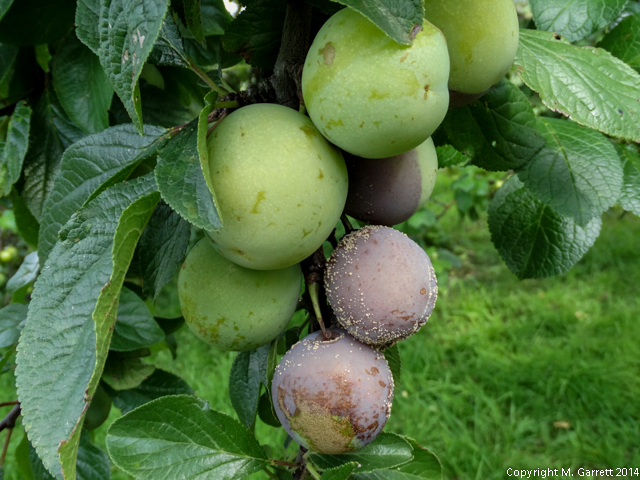
To add insult to injury the wasps still find the partially rotted fruit attractive so picking up the fallen plums from around the bottom of the tree isn’t the safest of tasks.
Oh well perhaps our Victoria or Marjories Seedling trees will produce some ripe plums. It’s a funny old year on the plot.
Sunday 27 July 2014
Here’s One I Built Earlier
Sunday was cooler and pleasanter than Saturday. We still had plenty of sunshine but the temperature was in the low twenties rather than the thirty degrees centigrade of the day before.
After a week of wall and step building I was in need of a bit of steam train photography but with steam locomotives banished from the main line in Yorkshire due to the fire risk they cause it meant a visit to a Heritage railway. I decided on a visit to the Lincolnshire Wolds Railway, somewhere we hadn’t been before.
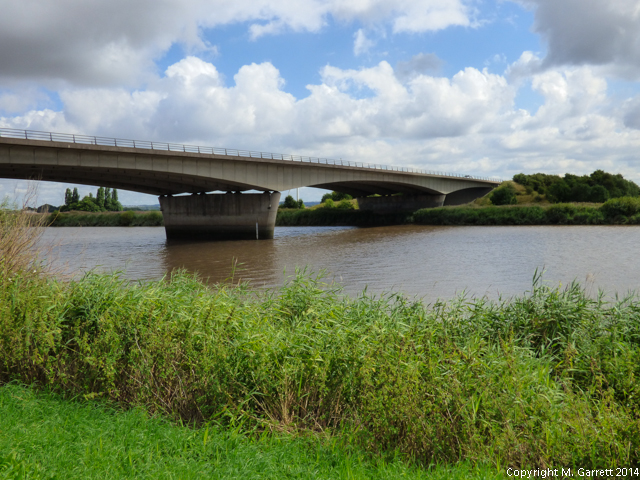
The journey to Lincolnshire meant using the M180 River Trent bridge crossing and as this is a bridge I helped build over 30 years ago now. We broke our motorway journey to see how the old girl is aging. From what I could see she’s still looking pretty good.
After working on this bridge I worked on developing computer simulation techniques to assist in the design and construction of these sorts of bridges. Trent Bridge was the first of its type to be built in this country.

After a short stop we were back on our way to Ludborough Station on the Lincolnshire Wolds Railway. I knew from a bit of web research that it is only a small heritage railway operating steam trains between Ludborough and North Thoresby a distance of about 5 miles.
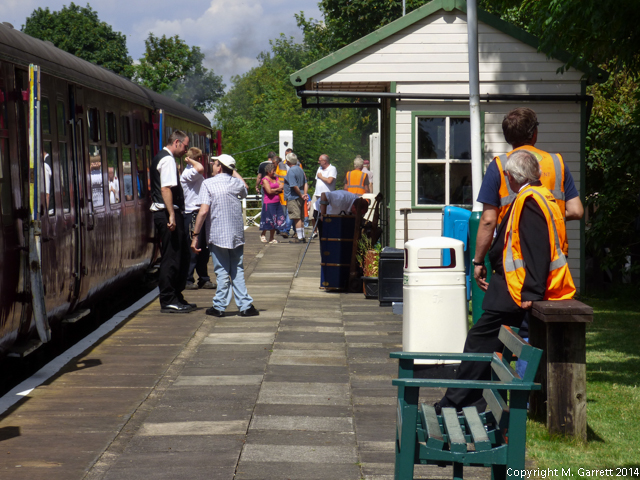
I always have my doubts when visiting one of these small heritage lines just what we will find. Will it just be men with oily rags and without any efforts to welcome anyone other than a true steam locomotive aficionado. That’s not what I’m looking for. As it happens the railway seems pretty family orientated with a museum, a little snack bar in an old railway coach and very importantly some friendly staff.
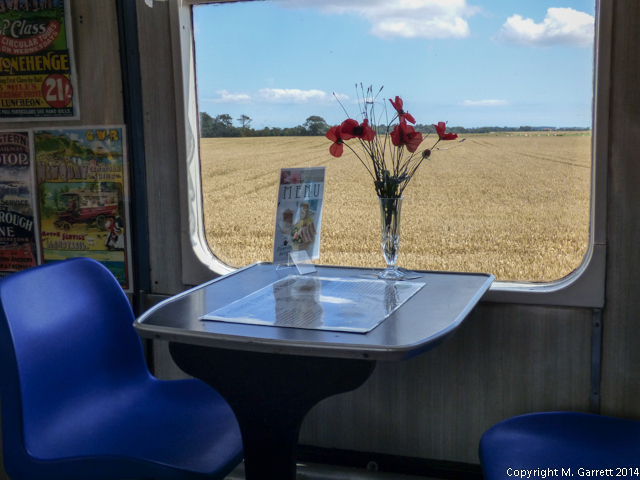
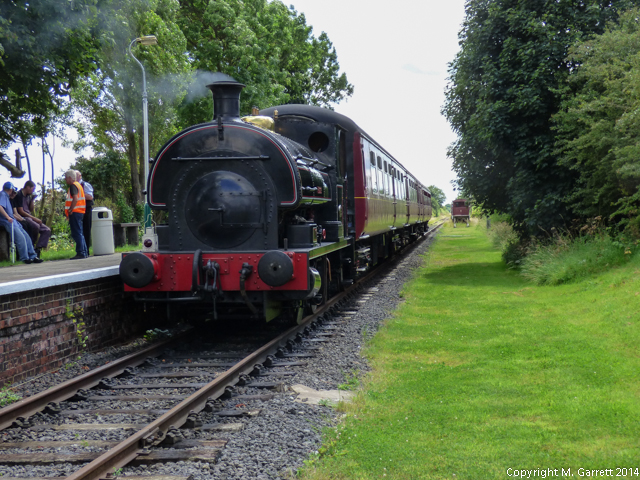
After watching one train depart off up the track to North Thoresby we headed for the “Steaming Kettle” buffet for a sandwich, some homemade cake and drinks whilst we waited for the train to return. After lunch we caught the next train along the short stretch of track. The railway seemed to be busy with visitors of all ages eager for their trip on the train.

Our plan was to move on to nearby Cleethorpes for the afternoon to have a little look around the town and a walk along the promenade. The journey to Cleethorpes was uneventful and didn’t give any indication of the masses of people who had descended on this seaside town.

There weren’t any obvious car parking spaces to be had but as Sue commented even if you found somewhere to park there wasn’t any space left on the footpath to walk on in any case. We didn’t stop to explore I much prefer the rather gentler surrounding of the Heritage railway than the chaos of Cleethorpes on a busy summer’s day.
Monday 28 July 2014
Unwanted Visitors
Monday was another nice summer’s day with the temperature once again into the mid twenties centigrade.
I now know what is causing the problem with our Oullins gage plums. The tree is infested with plum moth maggots. Today I picked a few fruits that looked like they might be starting to ripen but still had someway to go.
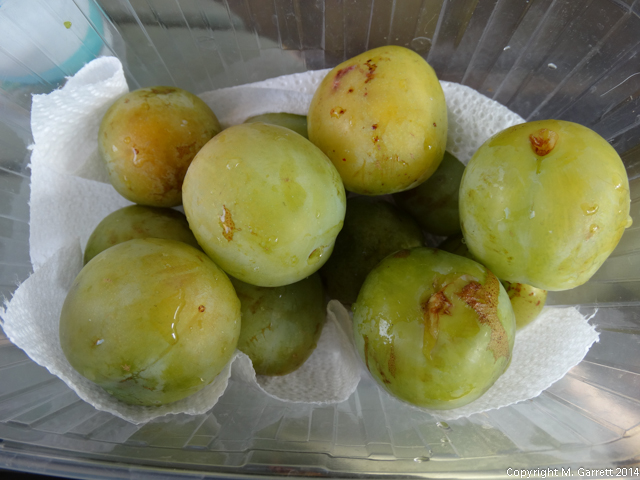
Not a particularly attractive looking collection of plums and I had a sort of an idea what I might find inside one or all of these plums. There was no way I was going to bite into one without a careful inspection inside first.
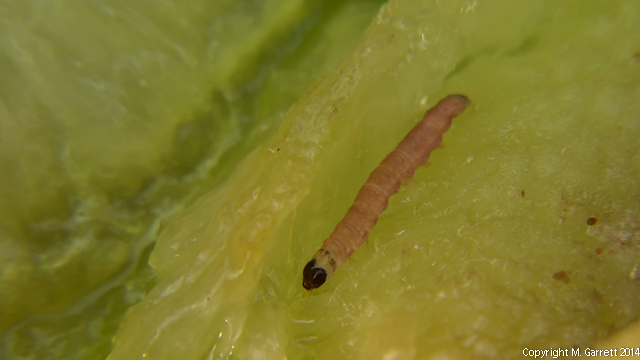
This is the culprit the maggot of the plum moth. I cut into four plums and each one had one of these pink coloured maggots inside. They are about 10mm long with a dark brown head.
It’s now a question of throwing all the available controls at our plum trees as its likely that they will all be infested. The trees will get a pruning first of all to bring them back to a more manageably size. In winter they will get sprayed with a winter wash and in spring pheromone traps will be hung in the trees to attract the male plum moths who then get stuck in the trap. I’ll try and pick up as many of the fallen plums as possible and dispose of them away from the allotment. There are also suggestions that grease banding the tree maybe beneficial so I might give that a go as well.
Hopefully if I can get all these measures completed it will start to cut down the infestation year by year. I don’t think there’s a quick solution.
Tuesday & Wednesday 29/30 July 2014
Not Too Bad for Blight Hit Potatoes
That fine July weather seems to have deserted us now as the last couple of days have been cooler especially Wednesday.
I thought I'd lift a few more of our blight hit potatoes which lost their haulms a few weeks ago now.
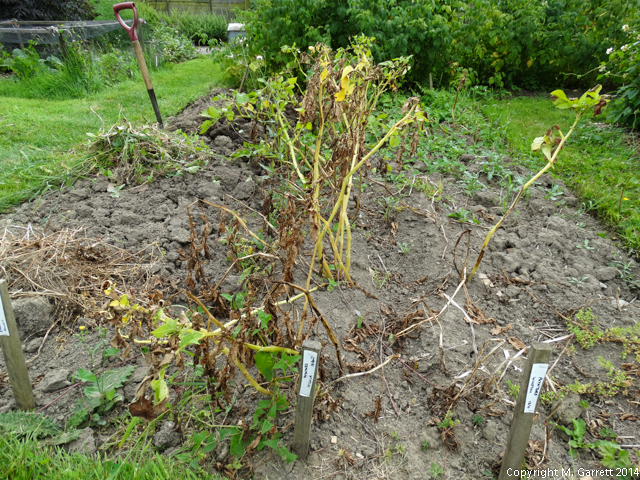
This is how they looked before I started digging them up. The centre row of Nicola seem to have withstood the blight better than the Winston to the right and Rocket and Casablanca to the left. The ground was very dry and hard and digging out the potatoes was tough going.
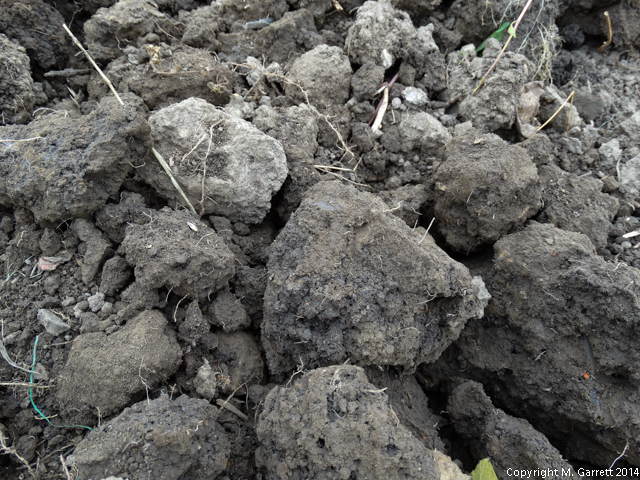
I'm glad I don't need to convert this stuff into a fine tilth for planting. It resembles concrete more than it does soil. I'm a little surprised anything could grow in it at all.
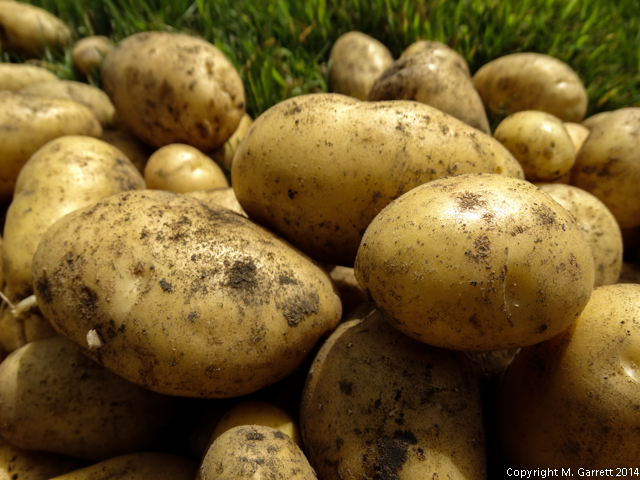
I was pleased with the Nicola potatoes I managed to extract from the hard ground. The crop was heavier than either the Casablanca or Rocket growing alongside and mercifully all the potatoes were free of slug damage.
However even though the potato tops had stood up to the blight better than some varieties I think some of the tubers might have been affected.
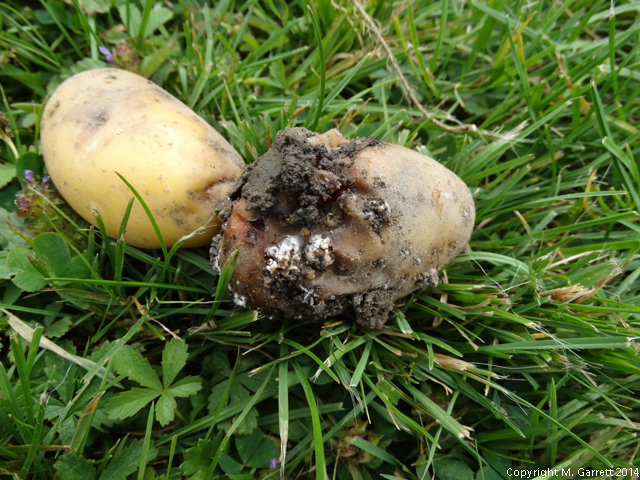
I think the damage to this potato is the result of blight. I will need to keep a close watch on stored tubers.
The first three varieties have now been lifted from this bed and the crops are low but I'm pleased to have any potatoes at all after blight attacking the crop in June.
The weights of the first three rows of potatoes lifted are shown below.
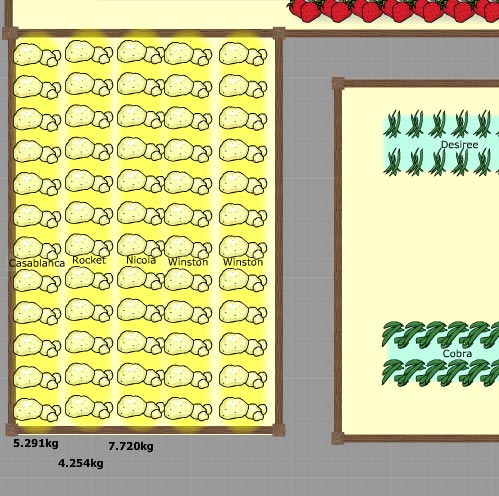
I think I'm going to lift Rocket and Casablanca grown under weed control fabric next and see how they have fared.
Thursday 31 July 2014
From Could Do Better to Couldn’t be Worse
That about sums up our experiment of growing potatoes under weed control fabric. Our experiment started back on 10 April when we planted two rows each of first early potatoes Casablanca and Rocket with a row of each planted conventionally and under weed control fabric.
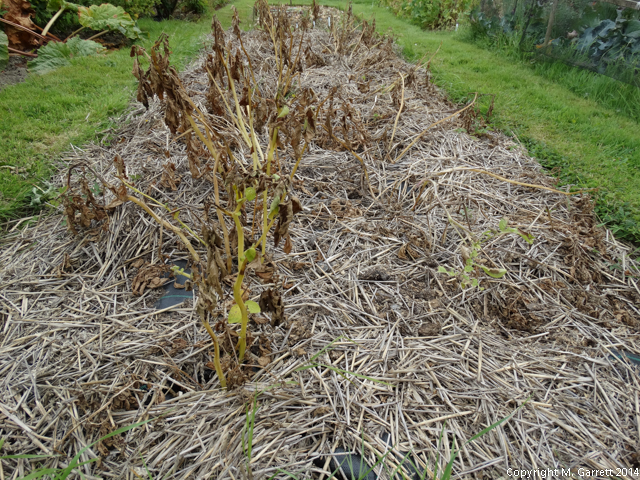
This is how the ones under the fabric looked before I began to lift the potatoes. All four rows had been affected by blight early in June but the ones under the weed control fabric less so than the ones planted conventionally. I didn’t know what to expect when the straw and fabric were removed.
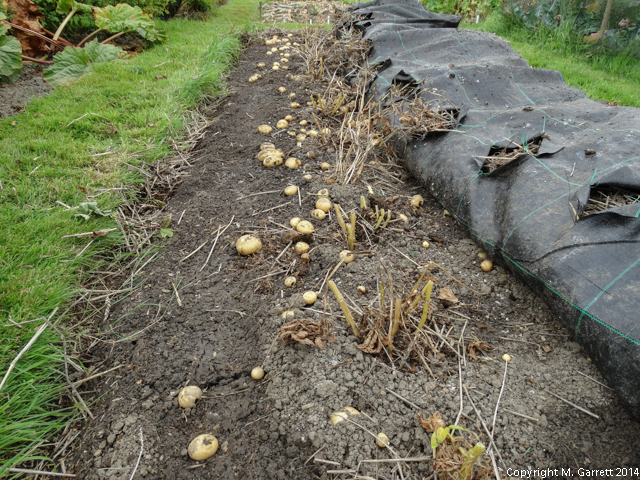
With the fabric removed from the row of Casablanca it was a bit odd to see potatoes on the surface of the soil but as I looked a bit closer my heart sank as I saw the slug damage to virtually every one of these potatoes. This was probably my worst fears of using the fabric in that it would provide a safe haven for slugs with no obvious predators.
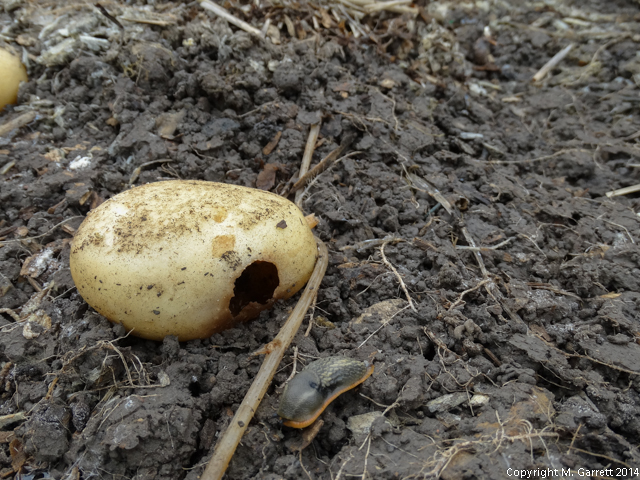
I started putting the slug damaged potatoes in one bucket and any undamaged ones in another. As I collected the potatoes on the surface the undamaged bucket remained worryingly empty. It was then time to see if there was any crop underground. Fortunately as I dug up each root I found a decent crop of undamaged potatoes under each one and thankfully at this stage the undamaged bucket was filling up faster than the damaged one. By the time the whole row was lifted I had 9.97kg of quality potatoes and 3.90kg of slug damaged ones ready for the Council recycling bin.
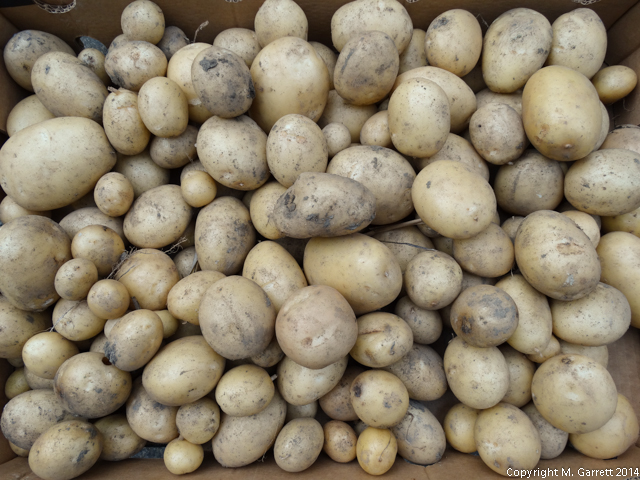
It was then time to lift the weed control fabric from the row of Rocket potatoes. I’m not going into great detail but this was one of the worst crops of potatoes I can remember lifting. After a couple of roots I would have left the whole lot in the ground if that were an option. Almost 100% of the crop was damaged in one way or another with either slug damage or what I’m assuming is wireworm damage. It might be possible to salvage some usable potatoes from the wireworm damaged ones which amounted to 6.3kg but the remaining 5.73kg are only fit for throwing away. Some of the tubers were badly affected by blight giving off that unmistakable smell as the potatoes had already turned to mush.
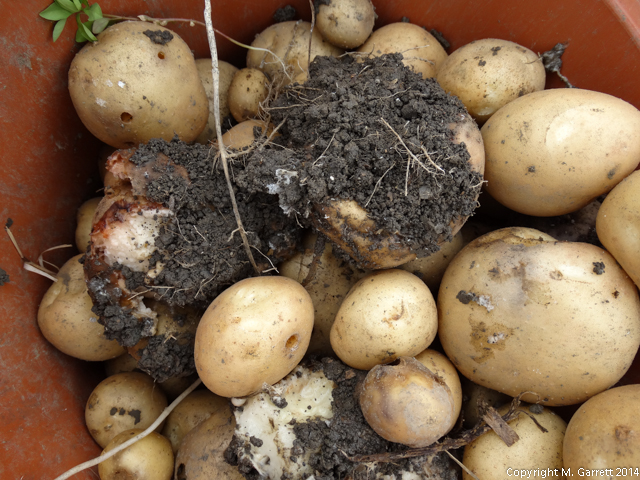
They don’t make a very pretty sight do they.
So what can I make of our experiment. In out and out crop weight the potatoes under weed control fabric produced heavier crops but in the case of Rocket with unacceptable amounts of slug and wireworm damage. Casablanca on the other hand isn’t quite so straightforward. There was far more slug damage under the fabric but the crop of undamaged potatoes was 9.97kg under the fabric compared with 5.29kg grown conventionally.
My own conclusions are that I’d probably give using fabric another go. I wouldn’t use the method for first earlies as it’s not that easy to just dig up one root and leave the rest growing. Having a look under the fabric to see how things are progressing seems a good thing but isn’t that easy to do in practice.
I won’t be growing Rocket again. The row planted conventionally suffered pretty badly from slug damage too when a row of Nicola planted alongside didn’t have any slug damage at all. I’m sure some varieties of potato are more susceptible to slug damage than others and I’ve now put Rocket into the very susceptible category.
The fabric and straw have been put back over the bed and will be left there until the autumn when it will be dug over for winter. The soil wasn’t quite so dry and hard as that where the conventional planting had taken place but it would certainly take a lot of work to get it ready for another crop straight away.
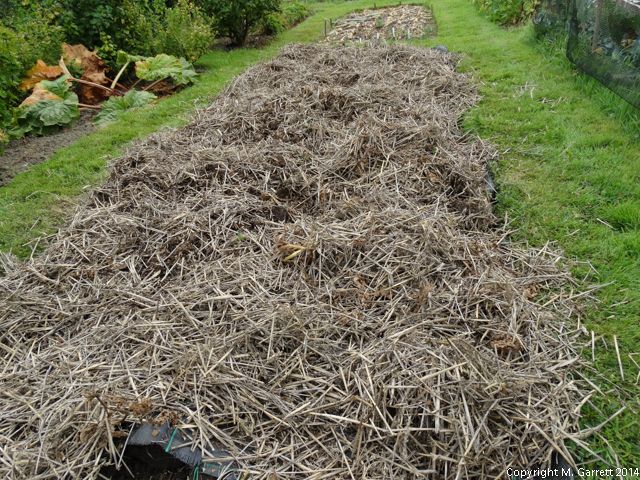
I’m not sure I want to lift any more potatoes for a while. Lifting a row which might as well be dumped straight into the Council recycling bin is a bit soul destroying.
